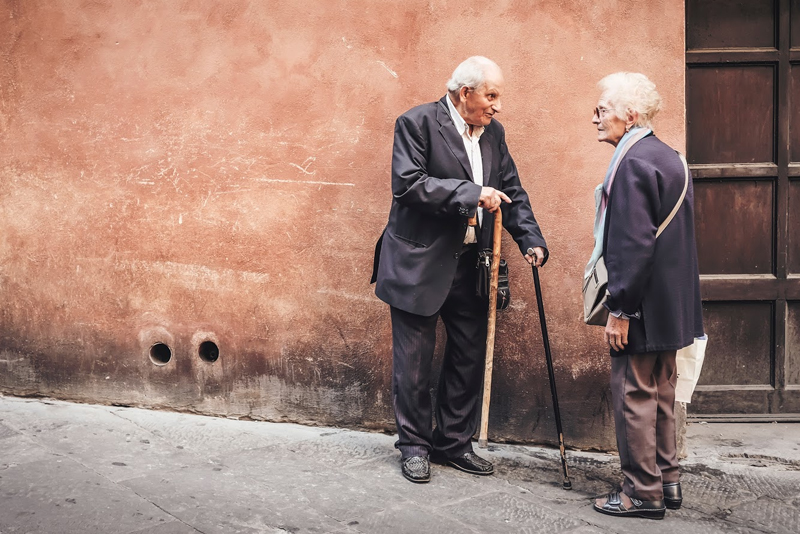What Is Deep Sleep? How Much Deep Sleep Is Optimal? – These are very common and important questions for your overall health and wellness. There is a reason that we for sleep one-third of our lives. Research [1] has shown that it’s not a matter of whether sleep helps us. But rather, what exactly sleep does for us.
The contemporary study [2] of sleep started in the 1950’s with the discovery of REM (rapid eye movement) sleep and non-REM sleep. As technology advanced, scientists began to look at brain waves, heart rate and the effects of a lack of sleep on our minds and bodies.
Throughout time, humans have gravitated toward the study of dreams. Now, scientists are focusing more on the impact of deep sleep. The stages [3] of deep sleep, also known as slow wave sleep or delta sleep, is when our body restores itself.

What Is Deep Sleep? How Much Deep Sleep Is Optimal?
The Stages of Sleep
How Much Deep Sleep Is Optimal? – To grasp the importance of deep sleep you first need to understand all the different stages of slumber. Healthy sleep is separated into a four-stage [4] cycle. It takes about 60-90 minutes to complete all four stages. These cycles are repeated 3-4 times a night.
Stage 1: This stage starts as soon as you fall asleep. It’s brief and you will awaken easily to noise. The brain produces alpha waves and theta waves. Eye movements slow to non-REM [5] sleep. This is sometimes called the “catnap” stage.
Stage 2: During this stage, sleep deepens but is still considered light. This is considered non-REM sleep. The brain experiences sudden increases in brain wave frequency. These are called sleep spindles [5]. Afterward, the brain waves start to slow down. We spend most of our night in Stage 2 sleep (about 45% of our sleep duration). If you want to take a “power nap” It’s best to wake up after this stage. Power naps are best taken between 1 pm to 4 pm to avoid disrupting nighttime sleeping. They should last between 10-20 minutes to avoid grogginess upon awakening.
Stage 3 & 4: This is the beginning of deep sleep. It typically starts about 35-45 minutes after first falling asleep. The brain starts producing slower delta waves as the body enters a restorative phase. This is regarded as non-REM sleep. During these stages, there is no muscle activity or eye movements. It’s very challenging to wake someone up during this phase. Some scientists combine these stages and call them N3.
Rapid Eye Movement Sleep (REM): This stage starts about 90 minutes after first falling asleep. It lasts for approximately 1 hour. During this time, your brain becomes very active. Eyes jerk (hence the name), blood pressure and heart rate increase and breathing can become irregular, shallow and fast. During this stage your brain is processes information taken in during the day and stores it as long-term and short-term memories. This is the sleep stage when you experience dreams.

What Happens To Us During Deep Sleep?
Deep sleep is a state of complete disengagement from the environment that occurs during REM sleep.
Physical Benefits Of Deep Sleep
- Your blood pressure drops leading to a more relaxed state.
- Your muscles receive more blood supply. Thus your body becomes more oxygenated.
- Your body’s energy is recharged.
- Your body starts to repair its tissues. At the cellular level, new tissue grows.
- The pituitary gland releases human growth hormone (HGH). HGH promotes cell repair, bone and muscle growth,
- metabolism of sugars and fats and helps regulate body composition.
Psychological And Mental Benefits Of Deep Sleep
- Deep sleep consolidates our new memories and it also reduces the need for more rest as slow-wave sleep is the “refreshing” part of our sleeping cycle.
- Adequate deep sleep may lessen insomnia and anxiety symptoms.
- Enough deep sleep gives mental energy and boosts cerebral acuity during the day.
- A person’s long-term memory is created during this time.

Deep Sleep And Age
It should be noted that sleep patterns vary with age. Typically, as people age, they experience a harder time falling asleep and increased trouble staying asleep. Contrary to popular belief, the need for deep sleep does not decrease with age.

Babies And Kids Sleep Differently
Infant sleep patterns form during the last months of pregnancy…
Infant sleep patterns form during the last months of pregnancy. However, newborns experience more REM sleep. In fact, until their second month of life, babies equally experience REM and NREM sleep. As they grow, the circadian rhythm emerge. At 6 months of age, babies experience only 30% REM sleep. By the time children reach preschool age, the sleep cycle occurs about every 90 minutes. Children go from stage 1-4 and REM, then reverse the stages, experiencing stage 3, then 2 then 1. Newborns [6] often wake up as they pass from deep sleep to light sleep and may experience difficulties going back to sleep.

Teens And Deep Sleep
Teens also experience the 4 stages of sleep as well as REM. But, hormonal changes, poor sleeping environments and the stress of school often prevents teenagers from getting enough sleep. Parents should ensure that their teenager sleeps in an allergy-free area that is free of light and distractions. Care should be taken to help them work through stress created by homework deadlines. Teenagers should avoid creating a sleep debt (sleep deficit), leaving them unable to concentrate and study.

Adulthood
Gradually, a teenager’s sleep cycle and subsequent brain activity should shift and match the needs and routines of an adult. Slow-wave sleep will taper off. In a study done by the NCBI [8] that analyzed aging and sleep, researchers postulated that between the ages of 20 to 60, deep sleep decreases by 2% per decade.
It’s important to note that this statistic does not take into account conditions that may affect sleep quality such as sleep apnea, one of many sleep-related breathing disorders.

Deep Sleep Among The Elderly
As our bodies physically change, so does our sleep pattern. As people grow older, they tend to have a harder time falling asleep (sleep latency) and staying asleep.
Seniors experience greater periods of light sleep. There is also a decline in REM sleep. In the elderly, problems with sleep are attributed to physical and psychiatric illnesses as well as medications prescribed to treat them.
Scientists are beginning to find a connection between a lack of restorative sleep and illnesses such as Alzheimer’s Disease. Amyloid protein naturally accumulates daily in your brain. During slow-wave sleep, your memories are consolidated, and excess amyloid proteins are carried away. Some studies [9] suggest that sleep gets interrupted during the slow-wave phase, the amyloid proteins build up and form plaque.
Top-Rated Tips On How To Sleep Better And Increase Your Deep Sleep

What Is Deep Sleep? Tip #5 – Set A Healthy Bedtime Routine
- Power off the computer, the internet, and the television at least an hour before bedtime. This will help your mind relax and influence your body to start preparing for sleep.
- Take a warm bath or shower.
- Set a regular sleeping time and wake up time. Regularity helps your body go into sleeping mode.

What Is Deep Sleep? Tip #4 – Exercise During The Day
Avoid too much physical activity at least 3 hours before you go to sleep. Set your workout during the day or have regular daily light exercise. Aerobic exercise is best’ but some exercise is better than no activity.

What Is Deep Sleep? Tip #3 – Eat Light
Don’t eat a heavy meal before you sleep. In fact, do not eat a heavy meal at least three hours before bedtime. Eat a healthy diet and eat at regular times.

What Is Deep Sleep? Tip #2 – Know When To Nap
Daytime sleepiness can be a problem and power napping might seem helpful. However, if you can’t fall asleep at night you should try and limit afternoon catnaps and avoid caffeine in the late afternoon and evening hours.

What Is Deep Sleep? Tip #1 – Create A Good Sleep Environment
- Your bedroom should be cool at night (between 60-67 degrees). During the typical sleep-wake cycle, our bodies sleep better at lower temperatures.
- Make sure your bedroom is dark. Use blackout curtains or blinds if necessary.
- Ensure the room is quiet or utilize white noise.
- Sleep on a comfortable mattress and pillows.
Remember, over time, mattresses lose their quality so be sure to update your mattress for supreme comfort and better night’s rest.
What Is Deep Sleep & How Much Deep Sleep Is Optimal Resources;
[1] Harvard Magazine; Deep into Sleep, Craig Lambert, August 2005.
[2] Harvard Magazine; Deep into Sleep, Craig Lambert, August 2005.
[3] Medscape; Normal Sleep, Sleep Physiology, and Sleep Deprivation, M Suzanne Stevens, MD, MS, D-ABSM, December 03, 2015.
[4] Harvard Business Review; Why Sleep Is So Important, Anne Field, January 14, 2009.
[5] Sleep.org, National Sleep Foundation; Understanding Sleep Cycles: What Happens While You Sleep.
[6] Children’s Hospital of Philadelphia; Newborn-Sleep Patterns.
[7] US National Library of Medicine, National Institutes of Health; Aging and Sleep: Physiology and Pathophysiology, Bradley A. Edwards, Ph.D., Denise M. O’Driscoll, Ph.D., Asad Ali, M.D., Amy S. Jordan, Ph.D., John Trinder, Ph.D., Atul Malhotra, M.D., October 31, 2010.
[8] Harvard Health Publishing, Harvard Medical School; Alzheimer’s wake-up call, September 2017.




